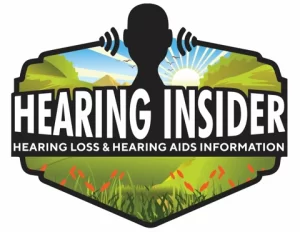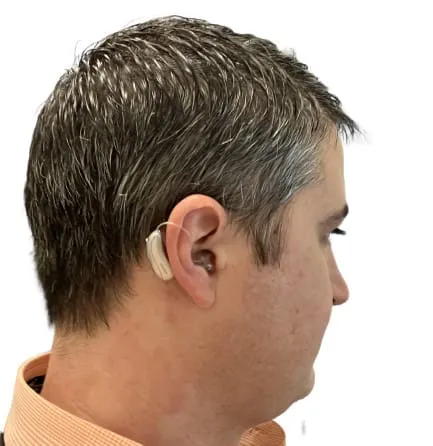If your hearing aids are flopping off your ear, here is a few suggestions.
The most popular style of hearing aids today are ones that slide behind your ear and then have a small wire or thin tube that conducts the sound down into your ear canal.
These hearing aids are generally referred to as behind-the-ear (BTE) or Receiver in the Canal (RIC). Most people, they stay behind their ears well and should not pull off even when removing glasses or bending over. However, if your hearing aids are flopping off your ear, here is a few suggestions.
First, the wire or tube length of the hearing aid may be too long or too short. The hearing aid is meant to sit directly on top of the ear. This way the directional microphones aim forward. If the hearing aid is back too far the directional microphones point up and you will not hear as well in background noise.
Likewise, if the hearing aid sits back too far, the wire is not shaped to hold it there and it may flop around. If the wire is too short it leads to the dome or earmold being pulled out of the ear. If you have a tight-fitting earmold that will not come out of your ear, it can lead to an indentation on the top of the bridge of your ear. This can become painful over time.
The solution to either problem is to get a different size wire or tube. This change is usually a very quick change done by a local audiologist. This is an easy, one-minute fix.
Tips for if the dome is slipping out of your ear:
1. Check the size.
Most domes come in 3 different sizes: a small is usually between 4-6mm, a medium is between 7-9mm and a large is usually 10-12 mm. If the dome is either too small or too large it may work its way out of your ear. It may help to try a different size.
2. Check the retention string.
A retention string of hearing aids is made to wrap inside the bowl of your ear. Think of this piece as a kickstand on a bike, its job is to keep the hearing aid in your ear. This is an optional piece, if your hearing aids have no issues staying in, you may elect to remove this piece from the hearing aid. This piece does need replacing over time as its strength of it gets worn out. When you get a new one you can curl it to the proper direction by using your thumb, similar to using your thumb to curl a ribbon on a present.
3. If all else fails…
If you are one of the unlucky hearing loss patients who is sure your hearing aid is fitting properly but are still having issues with it coming off of the top of your ear then there are a couple of reasons to consider why this is happening. Often, this is caused by flexible cartilage in the pinna, very curly hair that the hearing aid gets tangled in, or it simply happens to people who are extremely active. The tried and true solution tip is to use wig tape or toupee tape. I know patients who have successfully used Vapon Topstick brand (affiliate link to Amazon). They come in different sizes and can usually be purchased at a Sally’s Beauty Supply Store.
You can always use Phonak Stick and Stay (affiliate link to Amazon) which is actually made for hearing aid use. Phonak is the largest hearing aid company in the world and its products are trusted by millions. The quality is excellent but the price is usually higher than the toupee tape.
How to use
- Peel the cover off of the tape or “stick n stay” piece.
- Firmly press the tape onto the underbelly or side of the hearing aid (per your preference).
- Peel the reverse cover side off of the tape.
- Put a hearing aid on your ear like you normally would.
To Remove
Peel the stick piece off of the hearing aid and discard it.
Do You Fear Losing a Hearing Aid?
No one wants to lose a hearing aid. It can be stressful just thinking out it. Sometimes the fear of losing a hearing aid can lead hearing-impaired people to stop wearing their hearing aids when they are not at home or simply stop doing an activity that they would have otherwise enjoyed doing to avoid losing their expensive hearing aids.
As an audiologist, I would say please wear your hearing aids in all situations. They do not benefit you if they are not worn. However, I can understand the fear of losing them as it cost money to replace them. But if you did lose them please look into the L&D (Loss and Damage) policy that your hearing aids may have on them as it may only cost you a deductible to replace them.
There are simple and cheap solutions to this problem. But if that is still not enough, the most simple is to have a clip that goes from the hearing aid to your clothes.
The most common one used is called an Oto-clip (affiliate link to Amazon), it is simply an alligator clip that connects to the clothing and has an attachment loop that connects to either one or both hearing aids. It can be used with most styles of hearing aids but if you have an in-the-ear hearing aid your audiologist would need to add a retention loop to your hearing aid. To do this the aid is usually sent back into the factory.
For a behind-the-ear hearing aid, the

